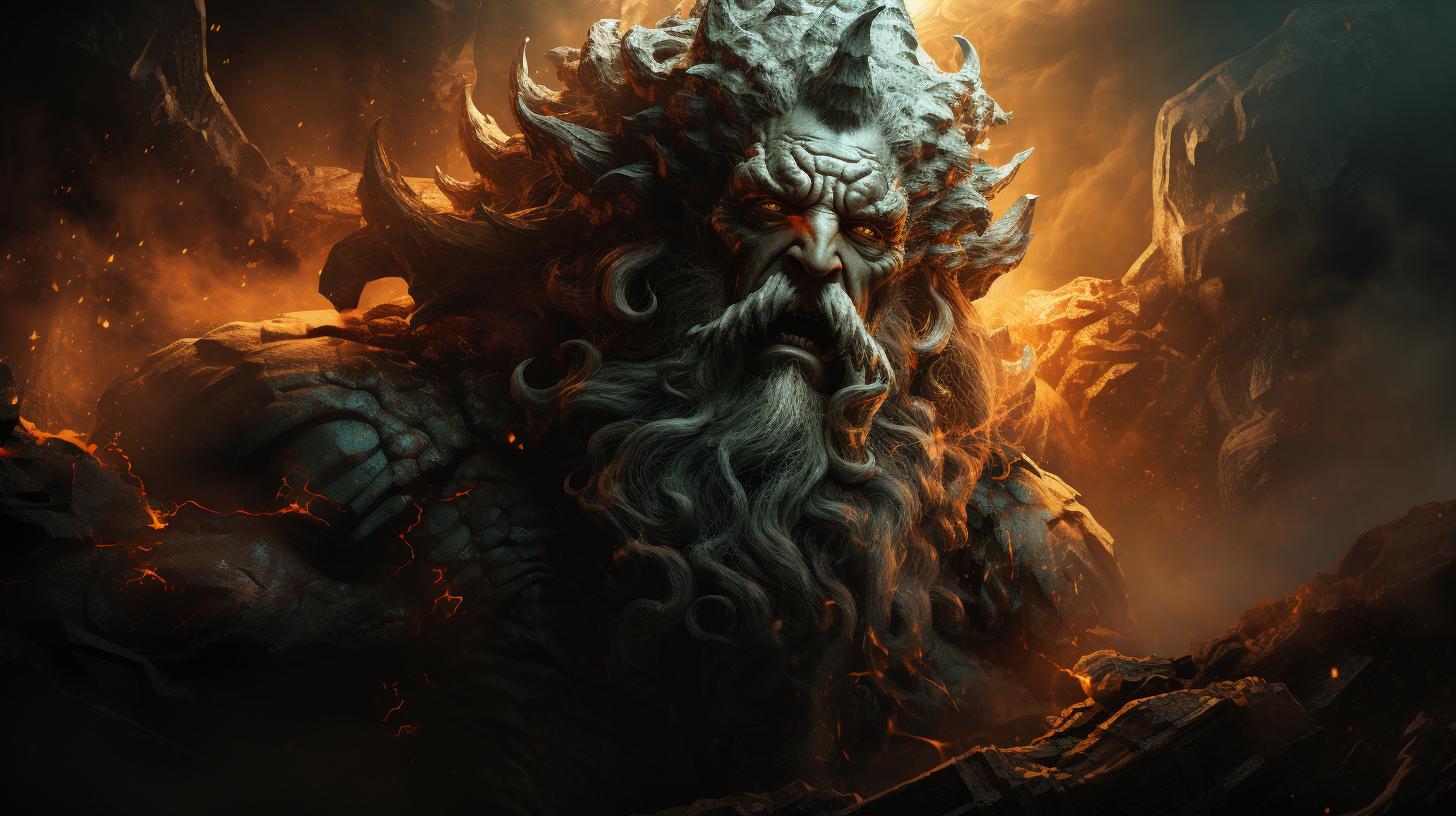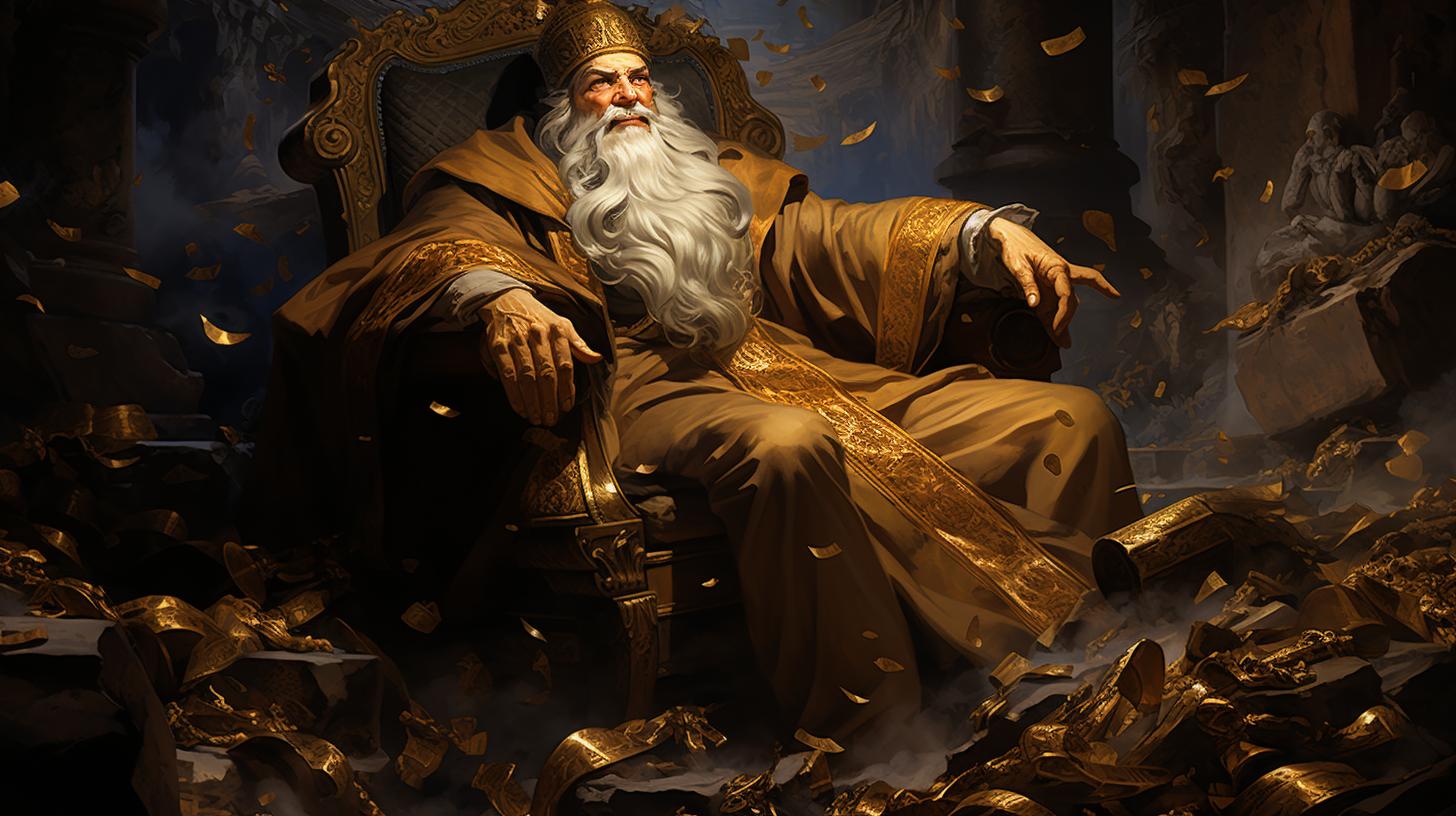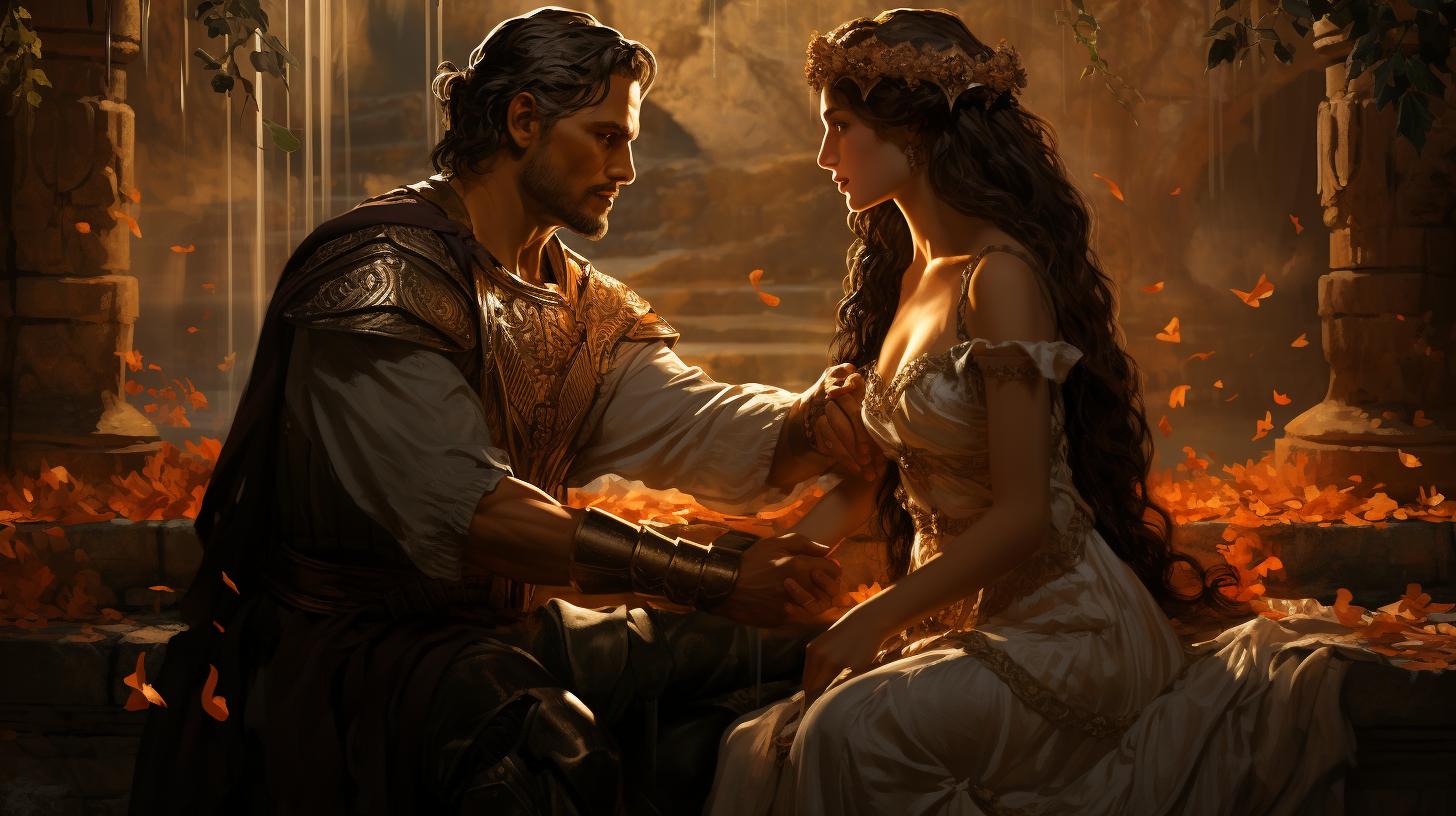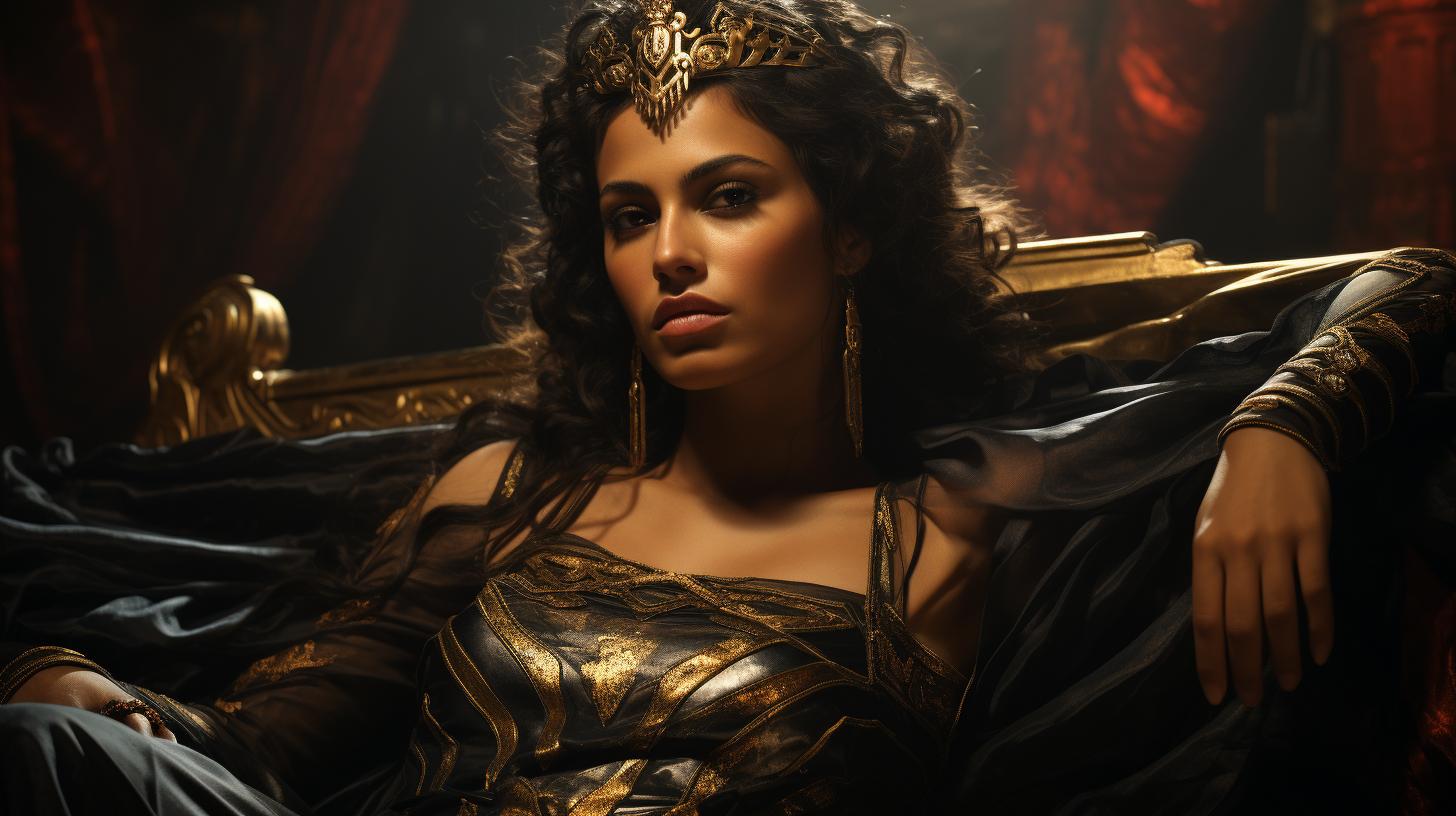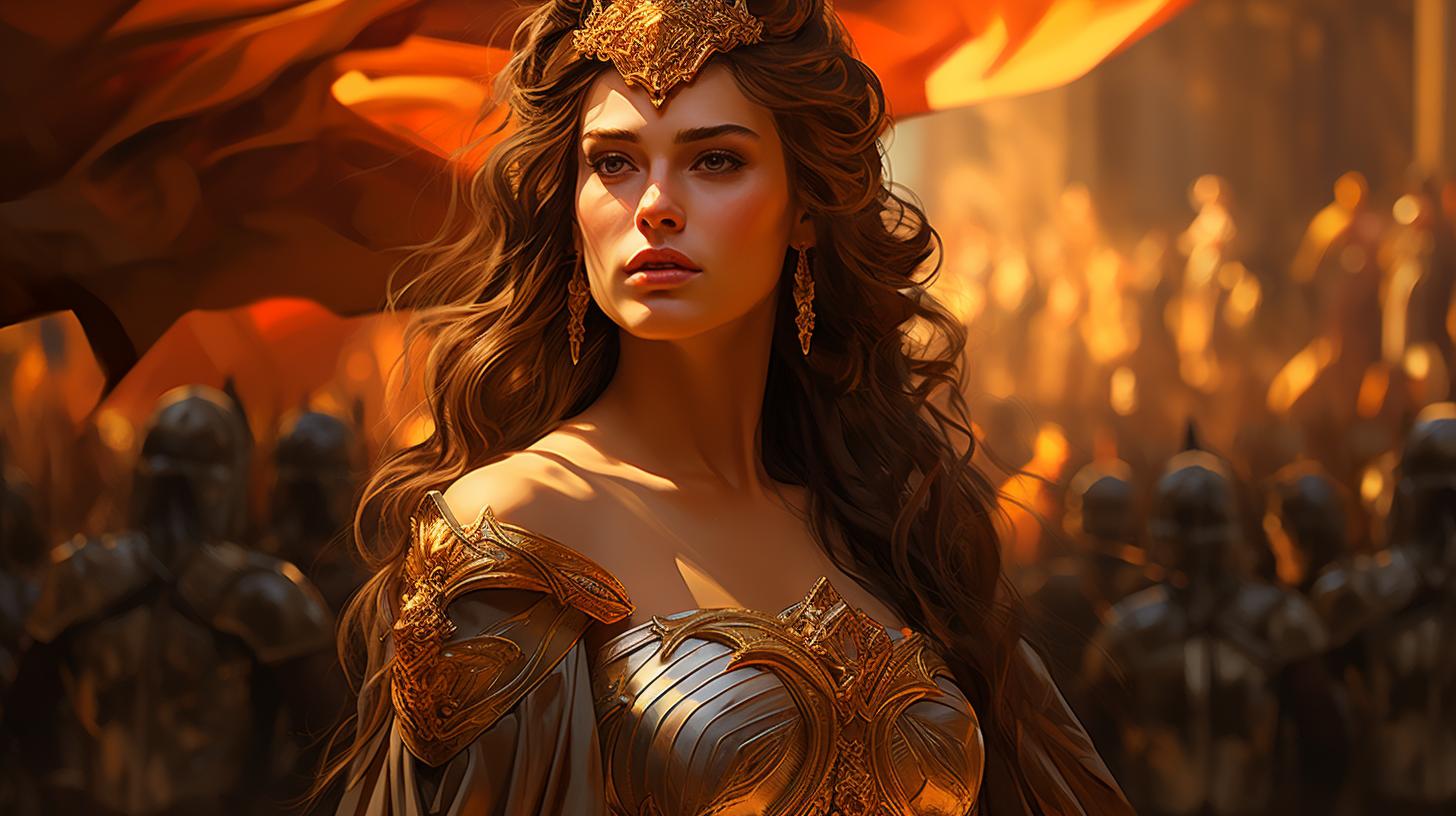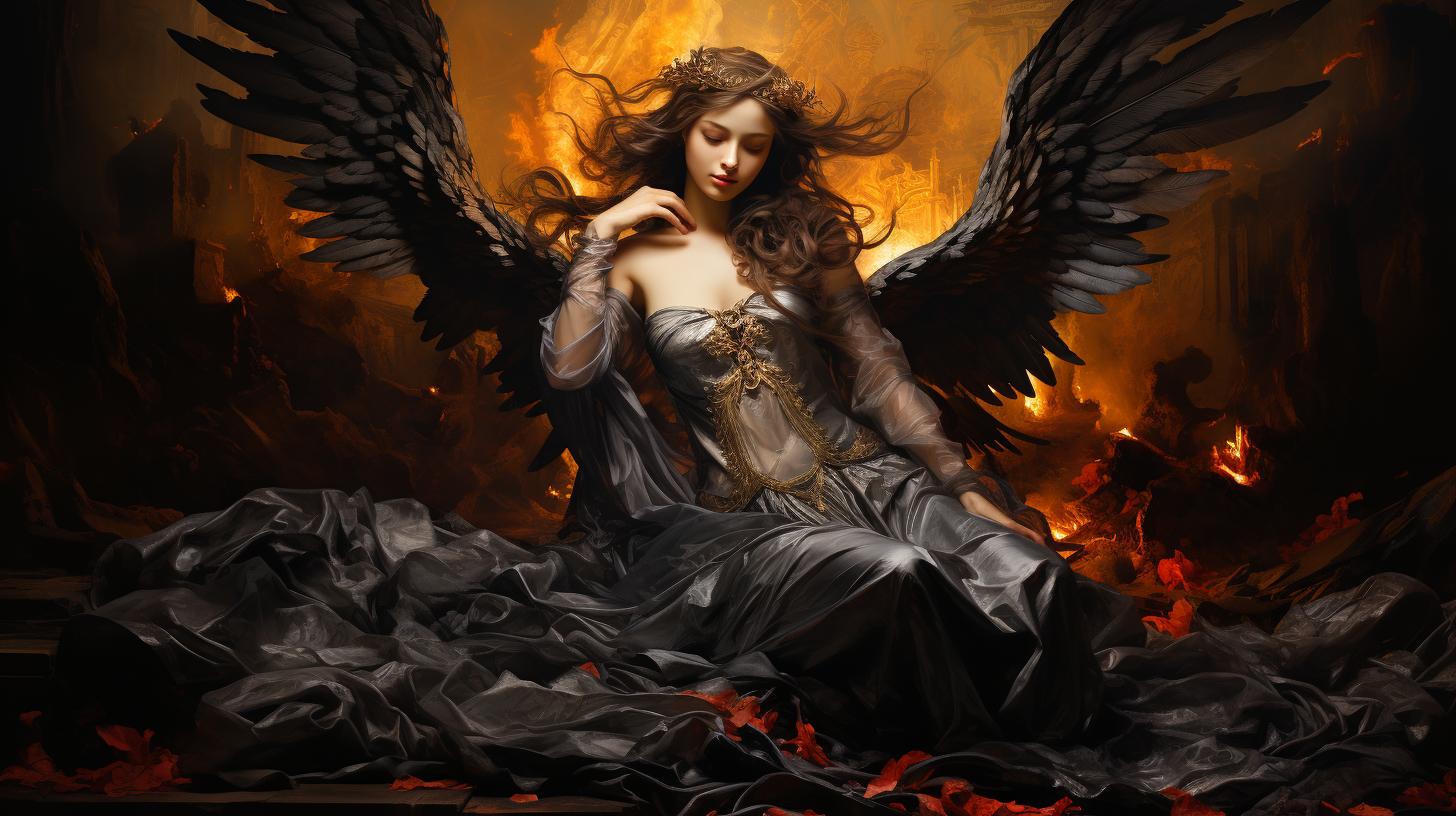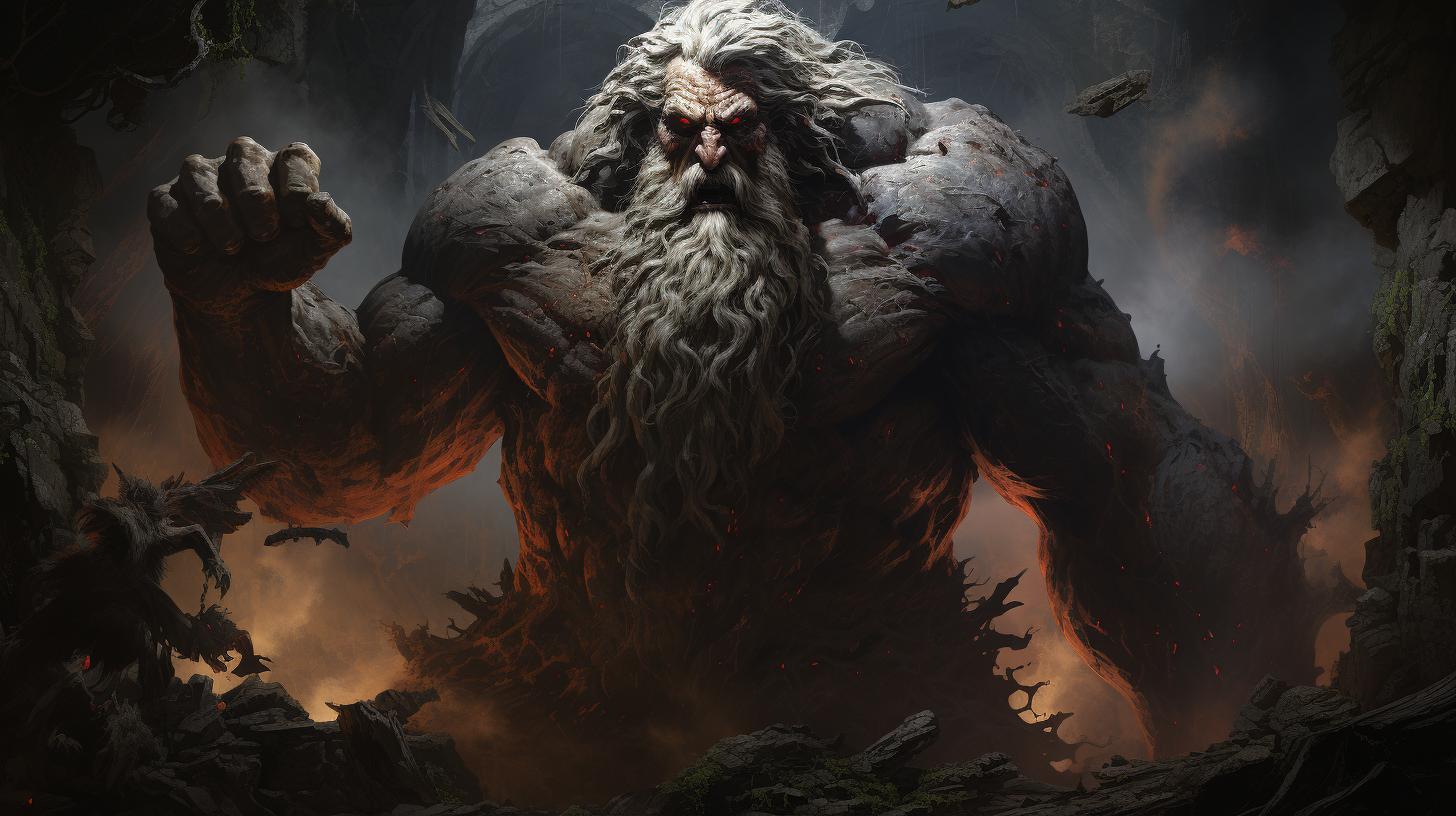Typhon Greek Monster: A Terrifying Giant in Ancient Greek Mythology
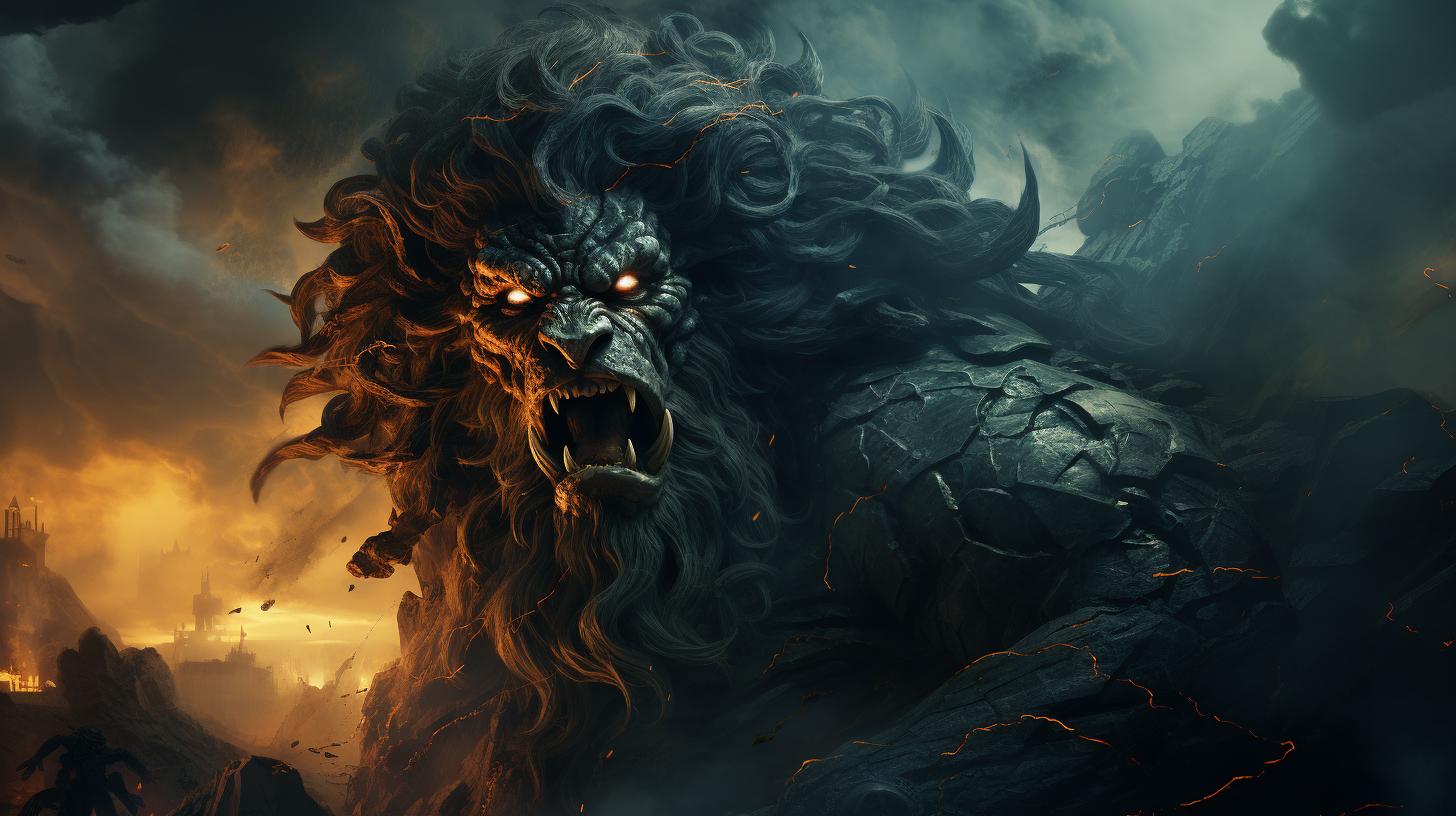
Typhon, also known as Typhoeus, is a monstrous giant serpent-like creature in Greek mythology. He was one of the deadliest creatures, believed to be the offspring of Gaia and Tartarus or possibly Hera or Cronus. Typhon and his companion Echidna are the parents of many well-known monsters.
In a cataclysmic battle, Typhon challenged Zeus for cosmic power but was ultimately defeated and banished to Tartarus or entombed under Mount Etna or the island of Ischia. His terrifying physical description includes a hundred heads with fire-emitting serpents, while his unique nature defies categorization as either god or human.
Typhon’s influence extends to various mythological figures and winds known as tifones, and there is an intriguing connection to the Egyptian god Seth. The legends of Typhon continue to captivate modern interpretations and reimaginings in literature, films, and popular culture.
The Origin and Mythology of Typhon
Typhon, a monstrous creature in Greek mythology, is a central figure with a fascinating origin and rich mythology surrounding him.
Typhon in Greek Mythology
Typhon, also known as Typhoeus, Typhaon, Typhos, Typho, and other names, is described as a massive serpent-like monster and one of the deadliest creatures in Greek mythology.
The Progenitors of Typhon: Gaia and Tartarus
The parentage of Typhon is a subject of debate, although he is often attributed as the son of Gaia, the Earth, and Tartarus, the Abyss.
It is believed that Gaia conceived Typhon as a means of opposing Zeus and reclaiming power.
Alternative Parentage Theories: Hera and Cronus
Some texts mention Hera, Queen of the Gods, and Cronus, the Titan ruler, as possible parents of Typhon. These variant parentage theories highlight the complexity of Typhon’s origins and his dangerous existence in the realm of mythology.
Typhon’s Battle with Zeus
Typhon, the monstrous serpent-like creature from Greek mythology, dared to challenge Zeus, the ruler of the gods. As the story goes, Typhon sought to overthrow Zeus and seize control of the cosmos.
This audacious act set the stage for a cataclysmic battle between these two powerful entities.
Typhon’s Challenge to Zeus
Typhon, driven by his insatiable desire for power, confronted Zeus with the intention of usurping his throne. With an unmatched ferocity and determination, Typhon unleashed his fury and defied the authority of the king of the gods.
The Cataclysmic Battle between Typhon and Zeus
What ensued was an epic clash that shook the heavens and the earth. Typhon, with his hundred fire-emitting serpent heads and immense strength, waged a relentless assault against Zeus. Thunderbolts collided with the wild, untamed energy of Typhon, giving rise to cataclysmic storms and earth-shattering tremors.
The battle raged on, unleashing chaos and destruction upon the world. Zeus, wielding his mighty thunderbolts, fought back with unparalleled skill and determination. The clash between the two titans reverberated across the cosmos, leaving a trail of devastation in its wake.
Zeus’ Victory and the Defeat of Typhon
Ultimately, it was Zeus who emerged victorious from this titanic struggle. Harnessing the power of his thunderbolts, Zeus unleashed a final, devastating blow upon Typhon. The monstrous creature was overcome by Zeus’ divine might, and his rebellion was crushed.
In his defeat, Typhon was either cast into the abyss of Tartarus or buried beneath the weight of Mount Etna, depending on the variant of the myth. Regardless of his final resting place, Typhon’s threat to the divine order had been quelled, and Zeus reigned supreme as the ruler of the gods.
Typhon’s Physical Description and Attributes
When it comes to the physical appearance of Typhon, it is truly terrifying and awe-inspiring. This monstrous creature is described as a fire-emitting serpent with a hundred heads. Each of these serpent heads is said to emit flames and produce ominous noises, adding to the creature’s terrifying presence.
Terrifying Appearance: Fire-Emitting Serpent with a Hundred Heads
Typhon’s most distinctive feature is his immense size and the abundance of serpentine heads on his shoulders. These hundred heads, with their fiery breath, create an atmosphere of chaos and destruction wherever the creature roams.
They are a constant reminder of his power and ferocity.
As one can imagine, encountering Typhon must have been a truly terrifying experience. His monstrous appearance instilled fear and dread in the hearts of even the bravest heroes.
The sight of a serpent-like creature with a hundred flaming heads would surely leave anyone trembling with terror.
Unique and Ferocious Nature: Neither God nor Human
Typhon’s nature is as unique as his physical attributes. He is neither fully god nor fully human but rather exists in a realm of his own. This makes him all the more fearsome, as he defies traditional classification and surpasses the limitations of mortal and divine distinctions.
The ferocity and cruelty embodied by Typhon are well-known throughout Greek mythology. His monstrous demeanor and immense strength make him a force to be reckoned with. The tales of his wrath and destructive power serve as a reminder of the chaos that can ensue when such a formidable being challenges the gods.
Additional Features: Serpent Legs, Fiery Eyes, and Enormous Hands
Aside from his hundred serpent heads, Typhon is said to possess other chilling features. He is often depicted with serpent legs, further emphasizing his serpentine nature. His eyes are described as fiery, capable of unleashing beams of flames that strike fear into the hearts of those who dare to look upon him.
To add to his already formidable presence, Typhon possesses enormous hands. Each hand is said to have fifty fingers, with each finger sporting a serpent head. This incredible detail adds to the sense of awe and dread that surrounded this monstrous creature.
In conclusion, Typhon’s physical description is marked by his terrifying appearance as a fire-emitting serpent with a hundred heads. His unique and ferocious nature sets him apart from both gods and humans.
Additionally, his serpent legs, fiery eyes, and enormous hands contribute to the overall sense of terror that surrounds him.
Typhon’s Offspring and Legacy
Understandably, the offspring of Typhon and his companion Echidna have inherited their monstrous nature and left an indelible mark on Greek mythology. Let us explore some of these infamous creatures:
Echidna: Typhon’s Companion and Mother of Monstrous Offspring
Echidna, half-woman and half-serpent, was the faithful companion of Typhon.
Together, they became the parents of numerous terrifying creatures. Echidna herself gave birth to beings like the fearsome Chimera, a fire-breathing creature with the head of a lion, the body of a goat, and the tail of a serpent.
She also bore the ferocious Sphinx, a composite creature with the body of a lion and the head of a human, as well as the Nemean Lion, a beast with impenetrable golden fur.
Cerberus: The Three-Headed Dog
One of the most iconic creatures spawned by Typhon is Cerberus, the fearsome three-headed dog. Serving as the guardian of the Underworld, Cerberus possessed a venomous tail and prevented the living from entering and the dead from leaving.
Its three mouths and sharp fangs struck fear into the hearts of all who crossed its path.
Hydra of Lerna: The Serpent with Multiple Heads
The Hydra of Lerna, another monstrous offspring of Typhon, was a gigantic serpent-like creature with nine heads. When one head was cut off, two more would grow in its place, making it nearly impossible to defeat.
The Hydra’s toxic breath and regenerative powers left many heroes grappling with its formidable presence.
Tifones: The Dangerous Winds
Tifones, the deadly winds, were also attributed to Typhon. These fierce storm gusts wreaked havoc and destruction wherever they roamed. Sailors feared encountering the tifones, which could capsize ships and cause chaos on land.
These winds were a reminder of the immense power and influence Typhon possessed in the natural world.
Typhon’s Association with the Egyptian God Seth
Interestingly, Typhon shares similarities with the Egyptian god Seth. Both are associated with chaos, destruction, and a rebellious nature. In Egyptian mythology, Seth is known as the god of deserts, storms, and disorder.
This connection between Typhon and Seth showcases the interconnectedness of ancient mythologies and how stories transcend cultural boundaries.
In conclusion, Typhon and Echidna are the parents of various legendary creatures, each with their own unique traits and terrifying abilities.
The monstrous offspring include beasts like the Chimera, the Sphinx, the Nemean Lion, the Hydra of Lerna, and the dangerous tifones. Additionally, Typhon’s association with the Egyptian god Seth highlights the interplay between Greek and Egyptian mythologies.
These creatures and the legends surrounding them continue to captivate and inspire, leaving a lasting legacy in the world of mythology and storytelling.
Typhon’s Imprisonment and Aftermath
Typhon, the fearsome creature from Greek mythology, faced a grim fate after his cataclysmic battle with Zeus. There are conflicting accounts of his imprisonment, with various sources suggesting different locations for his confinement.
Banishment to Tartarus or Entrapment under Mount Etna
According to some versions of the myth, Typhon was cast into the dark depths of Tartarus, the deepest and most desolate part of the underworld. This eternal prison was reserved for the most wicked beings, where Typhon would suffer for eternity.
In alternative accounts, Typhon found himself trapped beneath the fiery Mount Etna, a colossal volcano located in Sicily, Italy. It is believed that the smoldering rage of Typhon created the volcanic eruptions, with his fiery breath still causing the occasional tremors that shake the land today.
Connection to the Island of Ischia
In later tales, another location is mentioned as Typhon’s resting place: the idyllic island of Ischia in the Tyrrhenian Sea. Legends tell of how Typhon’s massive body was buried beneath the enchanting landscape of Ischia, forever bound to the island’s rich volcanic soil.
Typhon’s Significance and Influence in Greek Mythology
Typhon’s defeat had profound implications for the pantheon of Greek gods and their rule over the cosmos. It solidified Zeus’ supremacy as the ruler of the gods and established order in the divine hierarchy.
Typhon’s rebellion serves as a cautionary tale, emphasizing the consequences of challenging the established order and the power of the reigning deities.
Furthermore, Typhon’s formidable lineage marked him as the progenitor of numerous monstrous creatures, including the infamous three-headed dog Cerberus and the hydra of Lerna, with its regenerating heads.
The destructive winds known as tifones also trace their origins back to Typhon.
Through his connections to the Egyptian god Seth, Typhon’s mythology bridges the gap between Greek and Egyptian pantheons, showcasing the cultural interchange between these ancient civilizations.
In conclusion, Typhon’s imprisonment after his defeat by Zeus remains a subject of debate. Whether banished to Tartarus, confined under Mount Etna, or buried beneath Ischia, Typhon’s significance in Greek mythology cannot be understated.
His defeat solidified Zeus’ position as the ruler of the gods and established the consequences of challenging the divine order. Additionally, Typhon’s lineage as the father of monstrous offspring and his connection to other mythological figures ensure his enduring significance in ancient Greek lore.
Interpretations and References to Typhon in Literature and Art
Interpretations of Typhon’s mythology and references to him can be found throughout various works of literature and art, showcasing his enduring significance in cultural representations.
This section explores Typhon’s portrayal in influential texts such as Hesiod’s Theogony and Homeric Hymns, Aeschylus’ Prometheus Bound, and Nonnus’ Dionysiaca, as well as his impact on modern culture.
Typhon in Hesiod’s Theogony and Homeric Hymns
In Hesiod’s Theogony and Homeric Hymns, Typhon is depicted as a monstrous force challenging the rule of Zeus. He is described as a fearsome creature with fiery serpent heads and immense strength.
These ancient texts emphasize the cataclysmic battle between Typhon and Zeus, highlighting the power dynamics and the triumph of order over chaos.
Typhon’s Role in Aeschylus’ Prometheus Bound
Aeschylus’ Prometheus Bound explores Typhon’s character and his connection to the punishment of Prometheus, who had sympathized with Typhon’s rebellion against Zeus. Typhon’s role in this play serves as a reminder of the consequences of defying the gods and the perpetual struggle between divine authority and human defiance.
Typhon’s Presence in Nonnus’ Dionysiaca and Other Works
Nonnus’ Dionysiaca, an epic poem about the adventures of Dionysus, also incorporates Typhon into its narrative. Typhon’s role in this work highlights his association with chaos, emphasizing his opposition to the orderly world of the gods.
Other ancient works, such as Ovid’s Metamorphoses and Apollonius of Rhodes’ Argonautica, also make references to Typhon’s mythology, further solidifying his prevalence in ancient literature.
The Impact of Typhon’s Mythology on Modern Culture
Typhon’s menacing figure and his epic battles with Zeus continue to captivate artists, writers, and filmmakers in contemporary times.
His portrayal in popular culture includes appearances in books, graphic novels, and films, often serving as a symbol of chaos and rebellion. Typhon’s mythology inspires creative reinterpretations that explore themes of power, defiance, and the eternal struggle between order and disorder.
Comparisons and Contrasts with Other Greek Mythological Beings
Similarities and Differences between Typhon and Giants
In Greek mythology, Typhon shares certain similarities with the Giants, another group of formidable beings. Both Typhon and the Giants were born from the primordial forces of nature and sought to challenge the power of the gods.
However, while the Giants were often depicted as a collective group, Typhon was an individual creature. Additionally, Typhon’s serpentine appearance and fire-breathing heads set him apart from the Giants, who were typically portrayed as huge and monstrous creatures with human-like features.
Typhon and the Nemean Lion: Guardians of Precious Treasures
Though the Nemean Lion is not directly compared to Typhon in Greek mythology, there are certain similarities between the two entities. Both Typhon and the Nemean Lion were renowned for their immense strength and ferocity.
Typhon, with his multiple serpent heads, was a fearsome opponent, just as the Nemean Lion was known for its impenetrable hide and deadly claws. Both creatures were considered guardians of precious treasures and were symbols of power and invincibility in Greek mythology.
Typhon and the Storm God: Parallel Representations of Power
When examining Typhon’s mythology, similarities can be drawn between him and the Storm God figures in various mythological traditions. Typhon’s association with thunder, lightning, and his cataclysmic battle with Zeus reflects his parallel representation as a storm deity.
Similarly, gods such as Teshub in Hittite mythology and Thor in Norse mythology are often depicted as powerful deities associated with storms and thunder. These similarities highlight the cross-cultural significance of storm deities in ancient mythology.
Typhon and Other Mythological Figures Associated with Fire
Fire played a significant role in the mythological narratives of ancient civilizations, and Typhon shared connections with other mythical beings associated with fire. Prominent examples include the Fire Giants of Norse mythology and the fire-breathing Chimera of Greek mythology.
These figures, like Typhon, were portrayed as menacing creatures who possessed fiery attributes or abilities. Their association with fire symbolizes destruction, chaos, and the untamed forces of nature.
The Historical and Geographical Context of Typhon’s Legends
In order to fully understand the significance of Typhon in Greek mythology, it is essential to explore the historical and geographical context in which his legends emerged.
This section delves into the influence of geography on Typhon’s mythology, his connection to Cilicia and the Orontes River, and his associations with mountains and natural phenomena.
The Influence of Geography on Typhon’s Mythology
The geographical landscape of ancient Greece played a crucial role in shaping the mythology surrounding Typhon.
The rugged and mountainous terrain, dotted with caves, deep gorges, and volcanic activity, provided inspiration for the depiction of Typhon as a fearsome and powerful creature. The natural elements of fire, smoke, and seismic activity associated with volcanic regions like Mount Etna further contributed to the imagery and symbolism attributed to Typhon.
Typhon’s Connection to Cilicia and the Orontes River
One region closely tied to Typhon’s mythology is Cilicia, located in modern-day Turkey. The Orontes River, which flows through Cilicia, is often associated with Typhon’s birth and early exploits. The river’s proximity to the Tarsus Mountains, believed to be the dwelling place of Typhon, adds to the rich tapestry of mythological lore surrounding this formidable creature.
Cilicia’s unique cultural and geographical characteristics influenced the development and dissemination of Typhon’s legends within the ancient world.
Typhon’s Associations with Mountains and Natural Phenomena
Mountains held great significance in Greek mythology, and Typhon’s association with them reinforces his status as a powerful and menacing figure. Aside from the Tarsus Mountains, other peaks like Mount Etna and Mount Olympus are also linked to Typhon’s mythology.
The depiction of Typhon as being trapped underneath Mount Etna or entombed in Tartarus beneath the earth’s surface adds depth to his legend, highlighting the ongoing connection between mighty natural forces and the mythical realm.
- Typhon’s connection to Cilicia and the Orontes River
In conclusion, the historical and geographical context surrounding Typhon’s legends provides valuable insights into the origins and development of his mythology.
The influence of geography, particularly the rugged landscape of ancient Greece, shaped the depiction of Typhon as a fearsome and powerful creature. Furthermore, the association of Typhon with specific regions such as Cilicia and landmarks like the Orontes River, as well as his connection to mountains and natural phenomena, deepens our understanding of this formidable monster’s significance within Greek mythology.
Modern Interpretations and Reimaginations of Typhon
Typhon, the legendary Greek monster, continues to captivate modern audiences through various forms of creative expression. From literature to films and popular culture, Typhon’s character has been reimagined in compelling ways that reflect contemporary perspectives and interests.
Typhon in Contemporary Literature, Films, and Popular Culture
In modern literature, Typhon has been featured as a formidable antagonist in fantasy and mythological fiction. Authors have crafted imaginative narratives that explore the epic battles between Typhon and heroic protagonists.
These stories delve into Typhon’s overwhelming power and the desperate struggles of those who dare to confront him.
Hollywood has also seized upon the allure of Typhon, incorporating his menacing presence into blockbuster films.
Audiences have been enthralled by cinematic interpretations of Typhon’s battles with gods or courageous mortals, showcasing the awe-inspiring visual effects and the sheer ferocity of the mythical creature.
Beyond books and movies, Typhon’s influence extends into popular culture in various forms.
From video games to graphic novels, his character has been adapted and reimagined to entertain and immerse audiences in interactive storytelling. Typhon’s monstrous attributes, fearsome reputation, and cataclysmic battles continue to inspire and captivate modern imaginations.
Psychological and Symbolic Analysis of Typhon’s Character
Beneath Typhon’s terrifying exterior lies a wealth of psychological and symbolic depth. Psychologists and scholars have explored the multidimensional aspects of his character, delving into the inherent human fears and the archetypal symbolism associated with him.
Some interpretations view Typhon as a representation of primal chaos and the dark side of humanity. His menacing presence embodies the untamed forces of nature, reminding us of our own capacity for destruction and chaos.
Symbolically, Typhon has been associated with rebellion against established order and authority. His attempts to overthrow Zeus mirror human desires for power and control. Analyzing these symbolic aspects offers insight into the human psyche and our eternal struggle for dominance and individuality.
The Ongoing Relevance of Typhon’s Story in a Changing World
Typhon’s story continues to resonate in a world experiencing constant transformation. The themes of power, conflict, and our relationship with nature remain ever-relevant, providing fertile ground for reinterpretations of his character.
In an era marked by environmental concerns, Typhon’s symbolism takes on new significance. He serves as a cautionary symbol, warning us of the potential consequences of desecrating the natural world and underestimating its power.
Furthermore, Typhon’s tale speaks to our eternal fascination with overcoming seemingly insurmountable challenges. The struggle between good and evil, the triumph of the human spirit, and the eternal battle for control find echoes in our modern society, making Typhon’s story an enduring source of inspiration.
Through contemporary literature, films, psychological analysis, and societal reflections, Typhon’s presence in our collective consciousness persists. As our world evolves, so too will the interpretations and reimaginations of this legendary Greek monster, ensuring his enduring relevance for generations to come.
.

